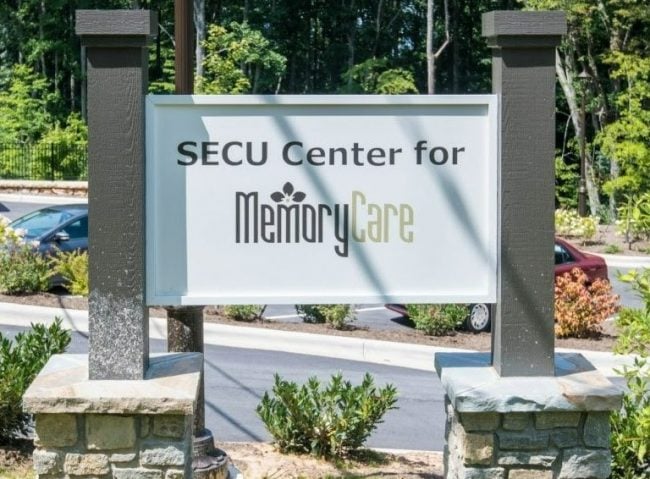NORTH HIGHLANDS, Calif. - Major world events have shaped boththe beginning and recent developments at SAFE Credit Union. Whenthe credit union was formed in 1940 as S.A.D. Federal Credit Unionit served Sacramento Air Depot, where the military produced andrepaired aircraft. Only a few visionaries could have imagined theimpact when a year later the United States went to war. By 1944,membership, which numbered 275 just four years earlier, had surgedto 1,800. But just as World War II boosted assets and membership,the fall of the Berlin Wall in 1989 could have doomed the creditunion. When the cold war thawed, Washington cut back on thenation's defense establishment. That meant phasing out McClellanAir Force Base, as S.A.D. was known by then. By 2000 the base wascompletely closed. But the credit union has prospered, thanks tosome major shifts. Henry Wirz has sat in the president's chairoverseeing those changes, but not before making some major turns ina career path that pointed him botony. Wirz grew up in the SanFrancisco Bay area, and majored in botany at the University ofCalifornia at Davis. His career plans underwent a sea change thesummer after graduation when he worked for the university. Thechancellor conducted a session for students and educators aboutcareer options. One thing he talked about was an M.B.A. program."That made a real impression on me," Wirz says. "Rather than go onin botany and the sciences, I decided I wanted to try to get anM.B.A. I was admitted to the program at the University of Michiganin Ann Arbor. Unfortunately, out-of-state tuition was so expensiveI transferred back to the University of California at Berkeley."After earning his masters he went to work for Coopers &Lybrand, the Big Eight accounting firm. He and his wife are bothCPAs. They have a son who is a sophomore at the University ofCalifornia and a daughter in her senior year of high school. Whileat Coopers & Lybrand, Wirz worked with a wide range of clients,one of them what is now SCU. "I was impressed by how well-run SAFEwas in those days. They never had any issues in their audits. Thepresident told me he was going to hire somebody as controller. Healso told me he was going to work for another five years, and hopedwhoever took the new position would be a candidate to replace him,"Wirz recalls. Wirz applied for the controller's job, was hired, andfive years later in 1984 was selected as president. "We're astate-chartered credit union," Wirz notes. "The state doesn'tdesignate us as a community charter, but in fact that's what weare. Our charter says we can serve anyone who lives, work orworships in six counties. Those counties have a population base ofabout 2 million." By the time McClellan AFB closed, the creditunion had acquired more than 1,000 SEGs and opened branches outsidethe base, which exposed it to a broader community. "At that pointwe challenged ourselves to make a rapid and complete transition. Wepretty much stopped soliciting new SEGS and started using ourbranch network and ATM network to bring in community members," Wirzsays. "We rebuilt our branch system. We remodeled branches thatwere in a good location. If a branch wasn't in a good location wemoved it to a better, more prominent location. As we opened newbranches, rather than going into old, established neighborhoods, wetargeted new neighborhoods where most of the housing stock was new.Our thinking was that when people move into an area they are morelikely to start de novo with all their relationships." The branchesare designed to appeal to families. SCU put in ample drivethroughlanes. Branches are large, at least 4,000 square feet, to allowprivate offices and full-service teller lines. There are gametables where children can play while their parents take care ofbusiness. Branch dcor highlights community photos and memorabilia.Branches also feature an advance service counter where members aregreeted as soon as they walk in the front door. As planned, Wirzsays, those branches have attracted middle America. The creditreports SCU runs on all new members show 53% of those joining havecredit scores of 630 and below. "It's a very challenged group,"Wirz says. "Much as we've gotten away from the Air Force base wherea lot of the young airmen had these difficulties, we're nowactually seeing more of those problems. So the role of the creditunion as an educator and counselor is probably even more importantthan it was." It all traces back to the switch to a state charterin 1999. "That changed SAFE as much as anything. Our NCUA charterwas not going to allow us to have as broad a field of membership aswe have with a state charter," Wirz says. "We became much moreactive in the community. We began using mass media advertising. Wesponsored community events. We encouraged the board and staff tovolunteer their own time and become active in the community. "Whenyou become community, all of a sudden your opportunities open up. Abig opportunity that opened up for us was indirect lending. Thedealers were getting a lot of prospects who weren't credit unionmembers but were attracted by credit union financing. So thedealers starting signing up people to join the credit union. Whenwe were a closed field of membership we were very limited." `With acommunity reach, SCU found itself gaining 400 to 500 new members amonth - and their auto loans - through car dealers. Still anotherchange involved SCU's idea of their competition. They had been theonly credit union that could serve the base. Banks generally didn'tpay much attention. Then, as SCU moved out into the community, itdiscovered the real rivals weren't other credit unions or evencommunity banks. It was large national banks such as WashingtonMutual, Bank of America and Wells Fargo. They were the financialinstitutions with branches in the very neighborhoods SCU wanted toserved. They were vying for leases on the same prime locations.Wirz praises the role of all SCU's vice presidents in helping thecredit union cope. "We work as a project steering committee. Everyone of the vice presidents knows exactly what's going on. It hascreated wonderful teamwork that extends all the way down into thecredit union," he states. "By working together this way we havebecome quite flexible and adaptable so we can respond quickly whenopportunities do come up. For example, some branch locations wecurrently have came up rather quickly and we had to act promptly,put our proposal in, then mobilize the resources to open thosebranches." On a bigger scale, Wirz believes the cooperative spiritof credit unions has been a key to SCU's success. "SAFE believes incooperation," he emphasizes. "We'll show you anything. If you wanta copy of our business plan, we'll share it. Every one of us hasthe same last name - `credit union'." -
|Complete your profile to continue reading and get FREE access to CUTimes.com, part of your ALM digital membership.
Your access to unlimited CUTimes.com content isn’t changing.
Once you are an ALM digital member, you’ll receive:
- Critical CUTimes.com information including comprehensive product and service provider listings via the Marketplace Directory, CU Careers, resources from industry leaders, webcasts, and breaking news, analysis and more with our informative Newsletters.
- Exclusive discounts on ALM and CU Times events.
- Access to other award-winning ALM websites including Law.com and GlobeSt.com.
Already have an account? Sign In
© 2024 ALM Global, LLC, All Rights Reserved. Request academic re-use from www.copyright.com. All other uses, submit a request to [email protected]. For more information visit Asset & Logo Licensing.









